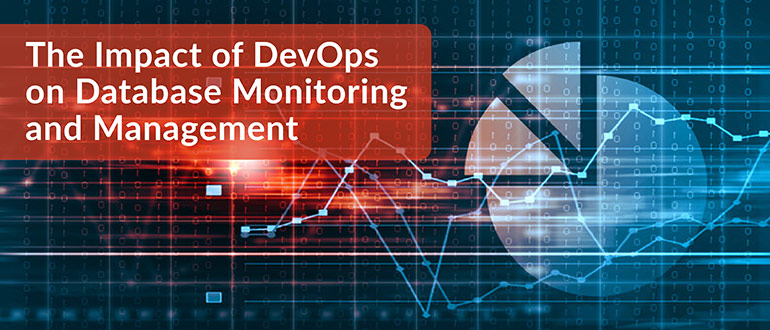
The rise of DevOps has broken down silos and brought database administrators (DBAs) and application developers closer together to deliver software faster and in a more agile manner. This near-constant change driven by DevOps is reflected in the results of the Redgate 2019 State of SQL Server Monitoring Report.
It reveals that 73% of organizations now deploy database changes multiple times per month, and 15% deploy multiple times per day, driven by DevOps. Yet, this is just one of the challenges DBAs face today. The research also identified the size of database estates is growing–45% said they will have more to manage over the next year, with 43% remaining the same.
Additionally, they are increasingly looking to migrate their databases to the cloud (cited as their biggest challenge by 22%) and are seeking to solve performance issues. Perhaps unsurprisingly, given these greater workloads and more frequent changes, human error is the largest cause of issues (22%), ahead of capacity problems and bad deployments.
Managing in a DevOps World
The database is now a core part of DevOps for many organizations and DBAs need to work more closely with their developer colleagues, adopting new technologies and tools to ensure business success.
This essentially involves DBAs focusing on the following distinct areas.
Standardizing Approaches Across DevOps Processes
The monitoring report highlighted human error as the biggest cause of problems for DBAs–and with larger DBA and developer teams now working on databases together, adopting standardized processes is vital to flag issues early and preventing later problems. Otherwise, what starts as a minor issue can swiftly escalate to become a significant business crisis.
As well as standardizing processes, organizations should look at rolling out industry-standard coding tools across the entire team. This will ensure a consistent approach, no matter who is writing, reviewing or editing code. Introducing a team style for database code, rather than having the code written in many different ways, for example, will make the codebase consistent and clear and minimize the confusion that leads to errors. At the same time, merging code early and often with version control tools will ensure you have a known, shared codebase on which to work and provide a single source of truth that can always be relied on.
Also, read: Pitfalls To Avoid While Implementing DevOps In Your Organization
Automating for Speed and Consistency
Developers who have adopted DevOps already see the value automated processes such as continuous integration, continuous delivery, and continuous deployment provide. Automation not only speeds up development, avoids manual errors and reduces laborious work, but also provides a full audit trail for regulatory compliance.
Extending this to the database can deliver major benefits for hard-pressed DBAs. Every time a change is committed to version control, for example, a continuous integration process can be triggered to test the change and flag up any errors in the database code. The errors can be fixed immediately and tested again before the change is then passed along to a release management tool where it can be reviewed before being deployed to production.
Overall, automation dramatically brings downtime to the market, but organizations need to ensure they have the right tools and processes in place if it is to be truly effective.
Stepping Up Monitoring to Drive Continual Improvement
One of the mantras of DevOps is continual improvement, and that applies equally to database DevOps. Monitoring is a key part of this. On one level, monitoring tools highlight potentially disruptive performance issues (cited by DBAs in the research as a major challenge), enabling them to be fixed quickly.
Beyond this, they also deliver the insights and trends companies need to improve, helping them optimize operations moving forward. Thanks to a combination of DevOps and the growing importance of the database to business success, many organizations are already sharing this information. For example, 40% give developers access to their monitoring data, according to the research, which helps to enhance performance by highlighting opportunities for improvement.
Guarding Personal Data and Ensuring Regulatory Compliance
We’ve all seen the spread of data privacy regulations across the globe. Over 60% of the world’s population is likely to be covered by more stringent legislation in the near future, with California joining the EU in enforcing new regulations from January 2020. Organizations need to realize they are now data guardians, not data owners when it comes to personal information.
At the same time, developers like to have realistic information in order to successfully create and test new code. That means organizations need to adopt tools for data masking and anonymization that can protect confidential and personal information, while still providing realistic and usable data for development and testing. This also gives a full audit trail for regulatory requirements, balancing speed and compliance.
DevOps has broken down the traditional silos between DBAs and developers and the importance of information has put the database center stage. As the latest Redgate research shows, DBA workloads are increasing, meaning they need to adopt new technology and collaborate more closely with developers if they are to successfully manage in a DevOps world.
Disclaimer- This article was originally published on www.devops.com
BDCC
Latest posts by BDCC (see all)
- Azure Arc: Extending Azure Services to Hybrid and Multi-Cloud Environments - April 8, 2025
- How AI Is Reshaping DevSecOps Governance - April 4, 2025
- Using AWS Auto Scaling to Handle Traffic Spikes Efficiently - April 1, 2025

